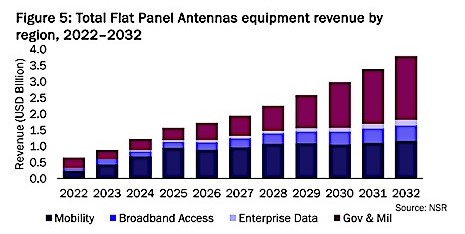Flat Panel Antennas Market
by Bernardo Schneiderman
Los Angeles, Calif. , April 5, 2024 - The market for Flat Panel Satellite Antennas (FPA) has been experiencing growing in the last five years and manufacturers are planning to compete for the multi-orbital antenna market. As we observed during the Satellite 2024 Exhibition and conference in Washington, D.C. held last month, we found more than 20 companies showing flat panel satellite antennas in the show floor for the major markets that include aeronautical, terrestrial and maritime & broadband for mobility/fix applications and focus in the end user market, enterprise and government and military.
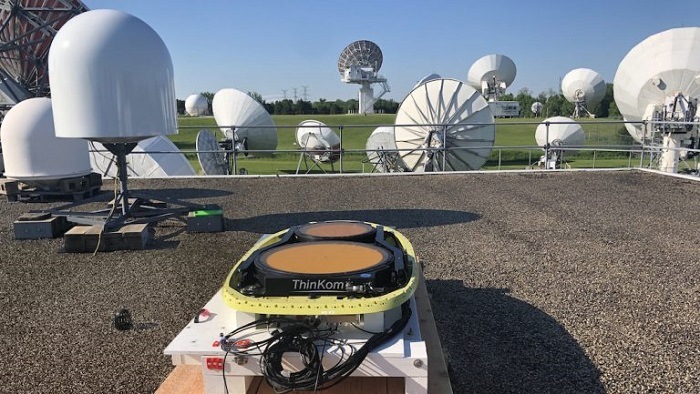 |
With the advent of Non-Geosttionary Orbit (NGSO) satellite constellations such as Starlink/SpaceX, Project Kuiper/Amazon) and multiorbital satellite operators such as SES/O3Bmpower, Eutelsat/OneWeb, , Telesat/Lightspeed the market has the potential to grow exponentially in the next 5-10 years.
NSR (An Analysys Mason company) published a new report on the“Flat Panel Satellite Antenna Market" covering four key markets: Mobility, Government & Military, Consumer Broadband, and Enterprise markets showing the key trends in each segment.
According to NSR the Mobility, Government and Military are the major revenue growth areas but broadband for end user and enterprise has also the potential for exponential growth with the low-cost price of terminal. As an example Starlink terminal is range from US$599-2,500 and announced that has more than 2 million subscribers worldwide and has entered the maritime market since early 2023 and announced plans to expand to the aeronautical market.
Project Kuiper announced last year March 2023 a low-cost terminal for less than US$ 500 when their constellation will be operational during 2025-2026 but has two satellite in test mode during 2024.
Among the major manufacturers players now in the FPA market includes Alcan, Auden, Ball, C-COM, Cesium, CPI, Getsat, Gilat, Global Konet, Intellian, Hanwa-Phasor, Hughes, Kymeta, Mi-Wave, Revgo Group, SatCube, Satixfy, Satpro, Starlink, Starwin, Sunwave and Thinkom, among others, and the majority of them showcased their current antennas at Satellite 2024.
"...According to NSR the Mobility, Government and Military are the major revenue growth areas for FPAs but broadband for end users and enterprise is also showing potential for exponential growth..."
For this article Satellite Executive Briefing (SEB) invited the FPA manufacturers for a virtual roundtable and we got the feedback from the following executives: Bilal Awada, Chief Technology Officer, C-COM; Hagay Katz, Chief Product and Marketing Officer, Gilat; Youn Gon Kim, CEO, Global Konet; Dave Seeman, Director of Business Development & Marketing, Revgo Global; Lukas Nyström, Chief Technologiy Officer, Satcube; and Greg Otto, VP of Sales & Marketing, ThinKom.
Excerpts of the virtual roundtable discussion follows:
Satellite Executive Briefing (SEB): Please provide a brief profile of your company and a current status of your flat panel antenna (FPA) offerings?
 |
|
| C-COM Flat Panel Antenna |
C-COM: C-COM offers a wide range of Communications on the Pause (COTP) auto-pointing satellite antenna covering Ka, Ku and C bands. Over 10,000 of our antenna systems have been deployed worldwide and are compliant with most satellite service providers in the industry. The new Electronically-Steered Phased-Array 4K element Flat Panel Antenna, under validation testing, will operate in Ka-band over GEO, MEO, and LEO satellite constellations targeting land mobility applications. The developed antenna technology can be extended for use in other markets such as maritime and airborne.
Gilat: Gilat has developed a breakthrough Electronically Steered Antenna (ESA) system for SATCOM-on-the-move connectivity. This ESA system has been proven in flight and has demonstrated remarkable performance. The ESA system is based on Gilat’s innovative Ku & Ka-band active phased array technology. It was designed for Very High Throughput Satellites (VHTS) over both GEO and NGSO constellations and is compatible across all existing GEO IFC networks while providing best-in-class link performance down to 20-degree elevation. Its flat design and light weight minimize drag and fuel consumption and the efficient SWaP enables passive cooling and minimal load on aircraft resources. Smart transmission power management guarantees adherence to relevant emission standards.
Gilat is at the forefront of ESA technology, working with key service providers and aircraft manufacturers to customize the technology to fit the antenna to various aircraft types and missions.
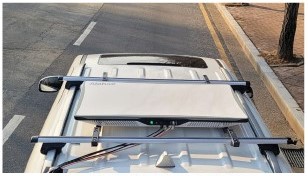 |
|
| Global Konet's On the Move Antenna |
Global Konet: With the commercialization of low earth orbit (LEO) satellite services, satellite communication has solved the shortcomings of existing GEO satellites with new technology. The KONET antenna, which is light and highly mobile and can easily and automatically track satellites with a flat antenna to provide Internet services anywhere, can overcome the stereotype of a satellite terminal with limited functionality and difficult operation.
The way you think about life communication through space communication is Global Konet's goal. We protect the safety of our customers in the event of natural disasters, earthquakes, forest fires, wars, etc. that may occur in living spaces. In order to request rescue and diffuse the situation, GK established and provides “a company that provides a space communication environment.”
The characteristic of the KONET electronic beam steering ESA antenna is that “it can be connected anytime, anywhere.” It solves the limited service and installation difficulties of existing fixed satellites, and has a light weight that exceeds the laws of physics, suitable for low-Earth-orbit (LEO) satellites with a fast beam tracking speed.
We provide antennas suitable for vehicles, ships, and man packs in various environments. Currently, GK FPA antennas are being produced and sold. It is exported to Asia and Israel, and is also used in Korea. Customers are using it on vehicles as OTM, and are planning to use it on ships starting this year.
RevGo Global: RevGo Global is a U.S. based manufacturer and designer, specializing in low profile, multi-band, multi-orbit RF transmission and reception modules such as BUCs, LNBs and Transceivers. These modules are integrated into flat panel antennas, also active and passive array systems by the manufacturers.
SatCube: Satcube is a fast-growing technology company in the satellite communications industry with a focus on developing game-changing terminals and services to enable high-speed broadband anywhere - quickly, and cost-effectively. The European innovator employs a world-class research and development team, harnessing proven academic and professional track records. Satcube actively collaborates with leading Scandinavian and European universities on ground-breaking projects sponsored by European Space Agency and Vinnova. Satcube’s headquarters are based in Gothenburg, Sweden, and its production facility is located in Karlstad, Sweden.We are currently providing a state-of-the-art passive flat panel, suitable for GEO applications with mechanical pointing. Said antenna is based on advanced low loss technologies to ensure the highest possible gain from the small aperture. In addition, we are currently developing active phased array antennas suitable for NGSO applications. These antennas are optimized for improved performance at low elevation angles.
 |
|
|
ThinKom's ThinAir Ka2517 terminal |
ThinKom: ThinKom just celebrated our 24-year anniversary and are proud that our flat panel VICTS phased array antennas represent the benchmark satcom solution in the commercial inflight connectivity (IFC) market and continue to gain new adoptions. Our latest commercial IFC product, the ThinAir Ka1717, was selected by Delta Airlines to outfit their entire regional jet fleet. The Ka1717 is the lowest-drag solution in the market and is optimized for regional jets, preserving valuable in-cabin space and reducing weight without sacrificing performance. The ThinAir Ku3030 systems, white labeled by Intelsat as “2Ku”, have been flying since 2015, have over 1,250 active installations and are seeing continued new adoptions. The ThinAir Ka2517 continues to serve as the backbone of Thales’ FlytLIVE service on Spirit Airlines, which is turning heads with its high throughput capability. The Ka2517 also has an impressive and quickly growing number of adoptions on the Airbus Linefit HBC+ program and will soon be offerable for Boeing Linefit on the 737, 777X and 787 aircraft.
On the government side of airborne, we recently announced our ThinAir GT line of products. These were engineered to operate in the most demanding EMI, EMC, and EMP environments, while maintaining ThinKom’s proven reliability. The ThinAir GT 2517 is in operation on a number of intelligence, surveillance and reconnaissance (ISR) missions and was selected as the satcom terminal for the Athena-S program with Sierra Nevada. The GT product line sweeps in the extended Ka-Band for operation on government networks like WGS and SDA. We are also in full production of a program on which 17” VICTS antennas are embedded beneath the fuselage skin, adding critical mission satcom capability without impacting the platform visual signature & time on station.
In other markets, our ThinWave Gateway Array has been delivered to a number of key government customers and we anticipate commercial contracts this year.
Our ThinSpace satellite payload antennas have recently passed a battery of qualification testing, with anticipated flight testing later this year. The ThinSpace antenna serves as a much more robust intersatellite link with similar data rates to lasers. ThinSpace products are more compact, lighter weight and require much lower prime power than optical inter-satellite links. Perhaps our most important advantage is our ability to instantly point/acquire/track off of ephemeris data without any lengthy and uncertain spiral searches - as is the case with lasers due to the extremely narrow beam widths.
SEB: Which applications are you focusing on, if any?
C-COM: As mentioned previously, C-COM will be targeting land mobility applications which can be served by our new flat panel antenna technology over the Ka-band services offered by GEO, MEO, and LEO satellites. C-COM will be working with partners to take the new antenna technology to other applications such as maritime and avionic.
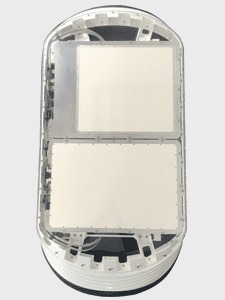 |
|
| Gilat ESA Antenna |
Gilat: Gilat has been investing in ESA technology development over the past 5 years to address commercial, business, government, and defense aviation market segments, with breakthrough ESA demonstrations for in-flight connectivity. These technology demonstrations confirmed the feasibility of ESA technology for the aviation market including multi-orbit operations supporting satellites in GEO and LEO orbit. Gilat is uniquely qualified to provide the next generation of ESA aero terminals based on its technology leadership in the In -Flight Connectivity market delivering thousands of aviation-grade modems and solid-state power amplifiers for its worldwide customers over the past 7 years. The ruggedized ESA terminal adheres to strict aviation quality standards, including safety of flight standards.
Global Konet: We focus on OTM antennas and manpack antennas, and Business services such as internet and intranet video conferencing. Applications that require short switch times between bands and orbits as in Comms-on-the-move, Comms-on-the-pause and In-Flight Connectivity supporting applications that will be used with connectivity combination of LEO, MEO and GEO.
RevGo Global: Applications that require short switch times between bands and orbits as in Comms-on-the-move, Comms-on-the-pause and In-Flight Connectivity supporting applications that will be used with connectivity combination of LEO, MEO and GEO.
SatCube: We focus on comms-on-the-pause (COTP) and comms-on-the-move (COTM) for the ground segment. I.e. land applications for groups such as emergency responders, NGOs, broadcast, and governments for both COTP and COTMs, and more specifically lightweight and easy-to-use terminals for trucks, busses, larger cars, etc.
ThinKom: We are always looking to expand our leadership position in the commercial IFC industry, but we view a number of other satcom applications as key additional avenues for growth. The ThinAir GT line, as an example, was recently introduced as an upgraded and expanded line of aero antennas for special mission operations. The extended performance increases flexibility and resiliency for reliable, efficient communication on a range of aircraft types. Similar to the ThinAir product line, the GT products support multi-orbit, multi-constellation, agnostic operation which are a key requirement for government ISR missions. Our Gateway Array is the only commercially viable phased array approach to replace parabolic dishes for satellite ground stations, and we are continuing to invest heavily to expand this product beyond government adoptions into the commercial sector. Key to the success of our technology in this market is the antenna efficiency, low power and commercially viability. The Gateway Array is also software-defined, reconfigurable, supports multi-beam, and performs digitally beam-forming.
SEB: What vertical markets will the FPA be used for?
C-COM: The new COTM FPA antenna will be used for different vertical markets including SNG, First Responders, Trains and Public/Private Transport vehicles which can benefit from the always-on broadband connectivity while vehicle in-motion.
Global Konet: Our main customers are government agencies and the military.
RevGo Global: Mobility offerings such as maritime, comms-on-the move, aeronautical, agricultural, IoT, Mil/Gov and First Responders.
SatCube: We work mainly with the following verticals: Emergency response groups, such as Humanitarian aid organizations, first responders or intergovernmental organizations such as the United Nations for example. We also work closely with Media companies and broadcasters, like CBS, ABC News, etc. And finally, we also support governments around the world.
ThinKom: Most of our antennas are designed for satcom use cases, and we have antennas represented in almost the entire ecosystem from ground mobile, to airborne, to satellite payload, to teleports. However, we are looking at new markets in need of disruption. Our antennas are capable of handling incredibly high peak powers, well in excess of what would be possible with an electronically scanned array (ESA). Therefore, we are very active in the Electronic Warfare and High Power Microwave markets where we have very strong competitive discriminators. We are in the early stages of this exploration and recently executed a CRADA with a US government agency through which we will demonstrate the high-power handling capabilities of our antennas, including multi-megawatt input powers
SEB: What differentiates your company and your offerings from your competitors?
C-COM: C-COM has been in the SatCom markets for more than 26 years and has built a great reputation for its iNetVu brand and the quality & support offered to its product line. We have sold well over 10,000 antennas in 100+ countries. The products are highly reliable and durable and have been proven under different climate conditions. We are a one-stop shop for mobile terminal development where we design the hardware, develop the software, and provide full support of the product. Our customers expect this high level of quality and support to continue with the new COTM ESA antenna offerings.
Gilat: Gilat’s ESAs are fully integrated across a wide variety of IFC MODMANs, which enables smooth integration with most commercial modems and dual modem support. This facilitates exceptional network flexibility for service providers, integrators and aircraft manufacturers.
Gilat’s ESAs also offer dual transmit and dual receive operations which empower GEO/MEO/LEO transitions of various options, including make-before-break and GEO/LEO simultaneous operations achieving the best possible global IFC coverage on GEOs and NGSOs combined. Advanced tracking algorithms and RF design provide for best-in-class elevation and skew compensation, improving antenna performance in real-world conditions.
Global Konet: Our advantage is low power consumption by optimizing the panel and MMIC chips. One of the few FPA antennas that has been commercialized and used in practice
RevGo Global: Our development teams feature highly experienced RF Engineers, Mechanical Engineers and Software Engineers who design custom solutions for our customer’s unique products and systems. In addition, our Automated Test Stations provides a systematic approach which lowers costs of manufacturing and allows for industry leading short delivery times to our customers. Lastly, our industry proven technical expertise in lower output back off requirements, enables a higher data throughput with more efficient use of bandwidth and power, resulting in a lower total cost of ownership.
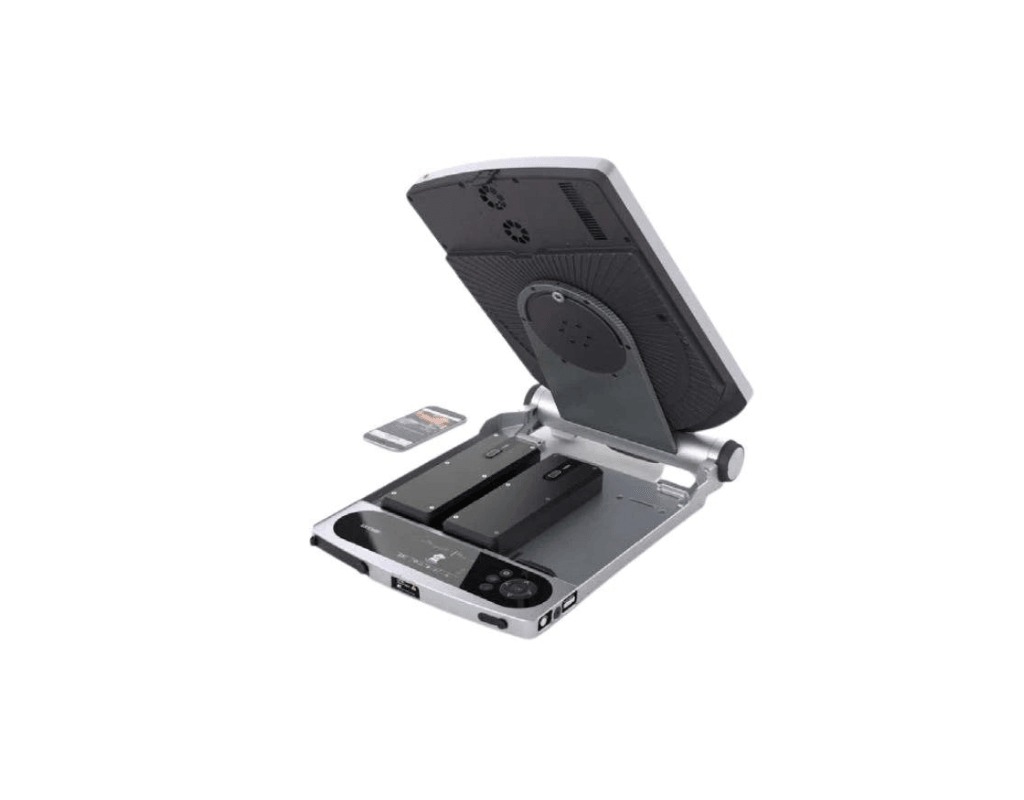 |
|
| Satcube Protable Terminal |
SatCube: Our main differentiators are that our terminals are optimized for SWaP and operations at low elevation angles. They are ruggedized to withstand all environments (IP65/67) and have a best-in-class UX for ease-of-use, in order to be able to be setup and online within one minute, no matter the user’s technical background.
Thinkom: ThinKom’s VICTS antennas are incredibly efficient compared to any other flat panel antenna on the market. To achieve the same RF performance, our competitors would need much larger antennas, typically 4x to 5x larger. Today’s ESAs of comparable size to the VICTS are only suitable for LEO-only operation. GEO satellites are 30x further away from the surface of the Earth, so much higher antenna performance levels are required, particularly to close links at high scan angles (in Northern latitudes) or to maintain links during normal aircraft maneuvering. Another major differentiator is the power consumption. Our antennas use passive RF components which significantly reduces the power consumption. Other flat panel antennas, such as ESAs, consume KW’s of power - whereas our antennas only consume tens of watts. The low power allows for gate-to-gate operation on the tarmac during very high ambient conditions and solar loading. Another benefit of the VICTS technology is the reliability. Electronics are will know to be the least reliable component of any commercial IFC installation, and an ESA is based on thousands of individual electronic components which are sensitive to the extreme environmental conditions on top of an aircraft. The VICTS antenna reliability has been proven with over 40M hours of operation, allowing us to provide the highest industry guaranteed MTBF.
SEB: Anything else you would like to add?
Gilat: Gilat was selected by Satcom Direct as the driving force behind the technology that will deliver the highest possible bandwidth to business aviation customers utilizing OneWeb’s Low Earth Orbit (LEO) constellation. The ESA antenna will be mounted on the aircraft fuselage and connected to Satcom Direct management and WiFi systems inside the cabin. The ESA terminal will enable Satcom Direct to deliver an unparalleled internet connectivity user experience and the highest data transfer capabilities.
Global Konet: We are developing a broadband IOT terminal and aero model that can be used for drones and aviation, and are developing antennas tailored to customer needs.
RevGo Global: RevGo has released 20 semi-custom flat panel RF solutions with over 7,000 units shipped. These RF products range from single to dual-constellation solutions, 1 to 40W output power, and stand-alone TX/RX to transceivers. We are able to leverage our core designs to quickly commercialize products for our flat panel integrators.
SatCube: There is a big market push for phased array FPA solutions, for good reasons. Low profile and no moving parts is a big selling point. However, it is important to remember that this is not a jack-of-all-trades technology that is suitable for all applications. The main deficit of phased arrays today is the significant performance degradation at low elevation angles. Current technology works well for >45degree elevation, but it becomes impractical for lower elevations. To compensate for this performance reduction, the vendor needs to significantly oversize the terminal (lack of performance can be countered by adding more antenna area). This makes it unfit for COTM on GEO, especially at high latitudes and on small vehicles with limited available real estate on the roof. This deficit is less severe for NGSO applications where the nominal position of the satellite is at zenith.
-----------------------------------------
 Bernardo Schneiderman is the Principal of Telematics Business Consultants. He can be reached at: bhstbc1@gmail.com
Bernardo Schneiderman is the Principal of Telematics Business Consultants. He can be reached at: bhstbc1@gmail.com




